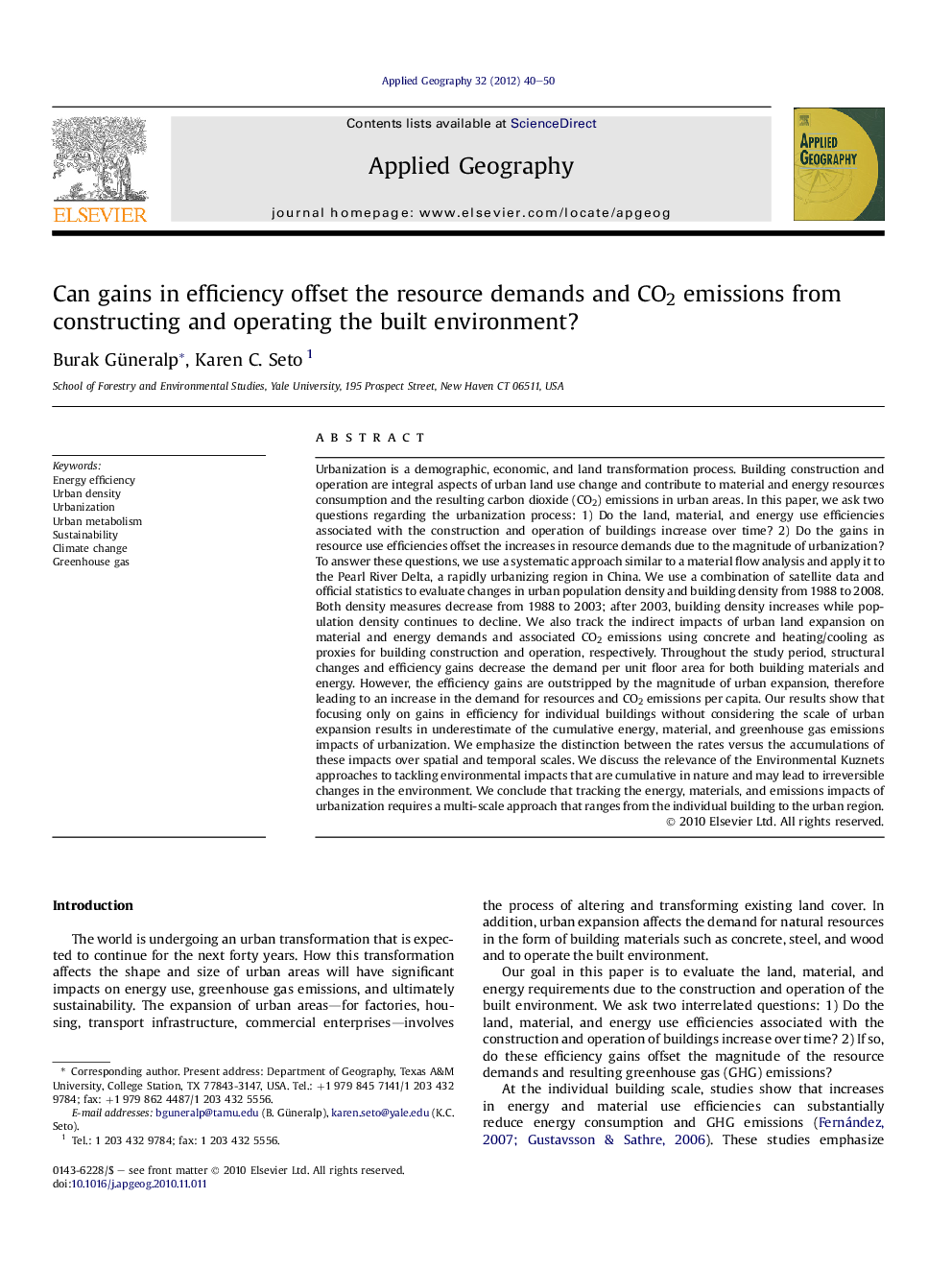| کد مقاله | کد نشریه | سال انتشار | مقاله انگلیسی | نسخه تمام متن |
|---|---|---|---|---|
| 83515 | 158724 | 2012 | 11 صفحه PDF | دانلود رایگان |

Urbanization is a demographic, economic, and land transformation process. Building construction and operation are integral aspects of urban land use change and contribute to material and energy resources consumption and the resulting carbon dioxide (CO2) emissions in urban areas. In this paper, we ask two questions regarding the urbanization process: 1) Do the land, material, and energy use efficiencies associated with the construction and operation of buildings increase over time? 2) Do the gains in resource use efficiencies offset the increases in resource demands due to the magnitude of urbanization? To answer these questions, we use a systematic approach similar to a material flow analysis and apply it to the Pearl River Delta, a rapidly urbanizing region in China. We use a combination of satellite data and official statistics to evaluate changes in urban population density and building density from 1988 to 2008. Both density measures decrease from 1988 to 2003; after 2003, building density increases while population density continues to decline. We also track the indirect impacts of urban land expansion on material and energy demands and associated CO2 emissions using concrete and heating/cooling as proxies for building construction and operation, respectively. Throughout the study period, structural changes and efficiency gains decrease the demand per unit floor area for both building materials and energy. However, the efficiency gains are outstripped by the magnitude of urban expansion, therefore leading to an increase in the demand for resources and CO2 emissions per capita. Our results show that focusing only on gains in efficiency for individual buildings without considering the scale of urban expansion results in underestimate of the cumulative energy, material, and greenhouse gas emissions impacts of urbanization. We emphasize the distinction between the rates versus the accumulations of these impacts over spatial and temporal scales. We discuss the relevance of the Environmental Kuznets approaches to tackling environmental impacts that are cumulative in nature and may lead to irreversible changes in the environment. We conclude that tracking the energy, materials, and emissions impacts of urbanization requires a multi-scale approach that ranges from the individual building to the urban region.
► The scale of urban expansion in South China overshadows the efficiency gains in building construction and operation.
► In spite of increasing urban density over the past 7 years, per capita and total CO2 emissions continue to rise due to the growing size of the urban footprint.
► Increasing urban density and resource-use-efficiency in and of themselves do not lead to reductions in energy or CO2 emissions.
► Addressing cumulative regional and global impacts of urban expansion requires analytical approaches that consider the spatiality of urban areas beyond the individual building.
Journal: Applied Geography - Volume 32, Issue 1, January 2012, Pages 40–50